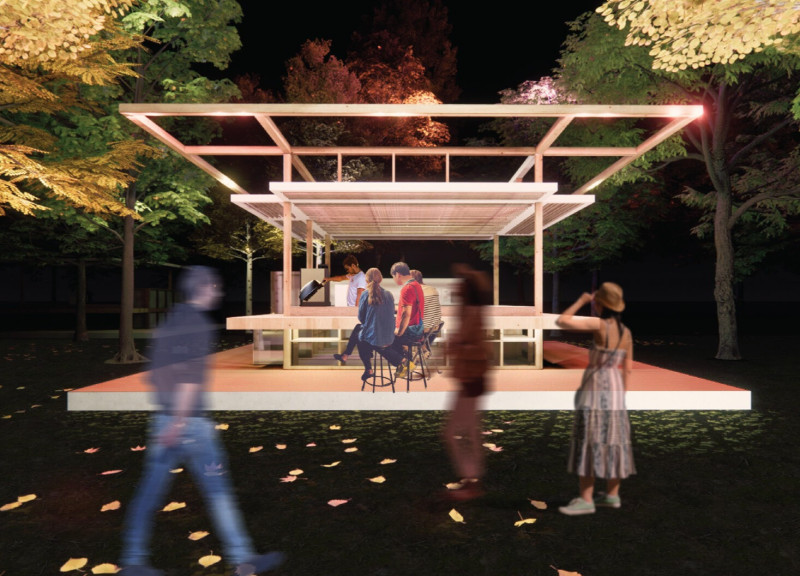5 key facts about this project
The Lantern in the Forest is located in the setting of the Sansusi Music Festival, designed to be a communal gathering point for visitors. The project focuses on blending the building with its natural environment while providing a space for social connection. By emphasizing functionality, the design creates a welcoming area for festivalgoers, maintaining a low impact on the local ecology.
Design Concept
The concept behind The Lantern in the Forest aims for harmony with the landscape. The structure features an open layout along with low walls, which encourages interaction among festival attendees and food vendors. This layout allows visitors to see and engage with one another, fostering a lively atmosphere that enhances the spirit of the festival.
Roof Design
A key feature of the design is the oversized roof, which offers shelter from various weather conditions while making a visual statement. The roof allows natural light to enter the space, creating a lively interior throughout the day. In addition, the changing shadows cast by the roof add complexity to the experience, inviting curiosity and exploration by those within.
Material Selection
Timber is the main material used in the kiosk's construction, sourced from nearby forests. This choice reflects a commitment to sustainability and reduces the environmental footprint associated with transportation. The use of timber not only supports the building’s structure but also connects it to the surrounding environment, aligning with the project’s objective to minimize ecological disruption.
Lighting and Ambiance
Translucent materials are included in the design to enhance the interaction between light and space. During daylight hours, sunlight fills the interior, creating a warm and inviting atmosphere. At night, the structure emanates light, becoming a visible landmark within the forest. This thoughtful use of lighting contributes to the overall ambiance, making the area appealing to visitors after sunset.






















































